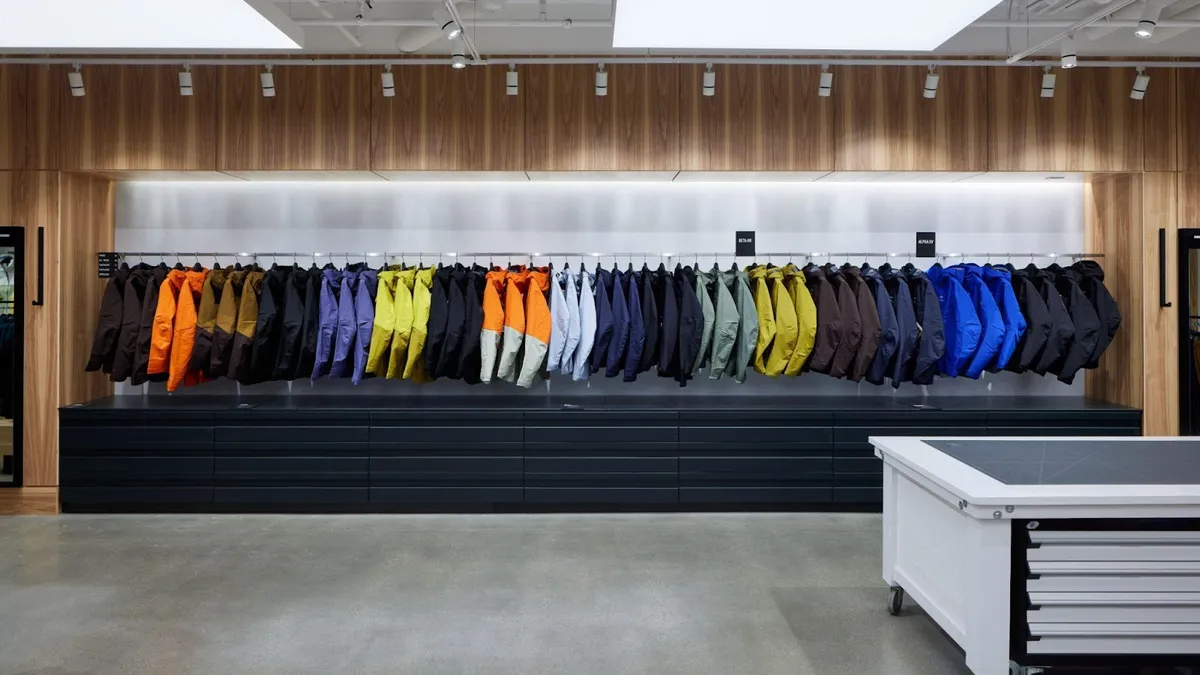In Amer Sports’ first quarterly earnings report since going public, the sporting goods company reported fourth-quarter revenue of $1.3 billion, up 10% year over year. For the year, revenue surged 23%, reaching $4.4 billion, according to a company press release.
Losses continued for both Q4 and the full year, with net loss narrowing by 36% to roughly $95 million in Q4 and full-year net loss down about 17% to $209 million.
As the company emphasizes a DTC model, the channel expanded greatly during the period. In Q4, DTC grew 37%, while wholesale fell 4%. For the year, DTC was up almost 50% and wholesale grew 12%.
“2023 was another strong year of sales growth and margin expansion for Amer Sports, but we are still in the early stages of our profitable growth journey following our transformation to a brand-direct business model,” CEO James Zheng said in a statement. “Led by our flagship brand Arc’teryx, our unique portfolio of premium sports and outdoor brands entered 2024 well positioned to deliver another strong year of profitable growth.”
Arc’teryx, which sits in Amer Sports’ technical apparel segment, continues to have strong momentum across regions, channels and categories, according to the company. The technical apparel segment saw 45% revenue growth in 2023, by far the largest increase across the company’s three segments, and Amer Sports is currently projecting technical apparel revenue growth of more than 20% for 2024. Overall revenue for Amer Sports is expected to grow in the mid-teens for 2024.
Arc’teryx’s expansion is ongoing: The retailer plans to open about 30 stores this year, up from 23 last year, and more than half of those will be in North America, Arc’teryx CEO Stuart Haselden said on a call with analysts Tuesday. Haselden told Retail Dive last month that the brand will keep up that store opening pace “for the foreseeable future,” with a possibility to reach over 500 stores globally over time.
The sporting goods company, which owns Arc’teryx, Salomon and Wilson Sporting Goods, among others, filed for an IPO in January and initially expected a valuation of up to $8.7 billion. When the company went public in early February, it was priced a few dollars lower than planned and the company’s valuation sat at more than $6 billion.
The company said in its F-1 filing that it planned to use the proceeds from the IPO to pay down debt and executives on a call with analysts said the company retired $4 billion of shareholder loans and refinanced 1.8 billion of third-party loans. The refinanced loans now have more favorable terms and their maturity has been pushed to 2031.














